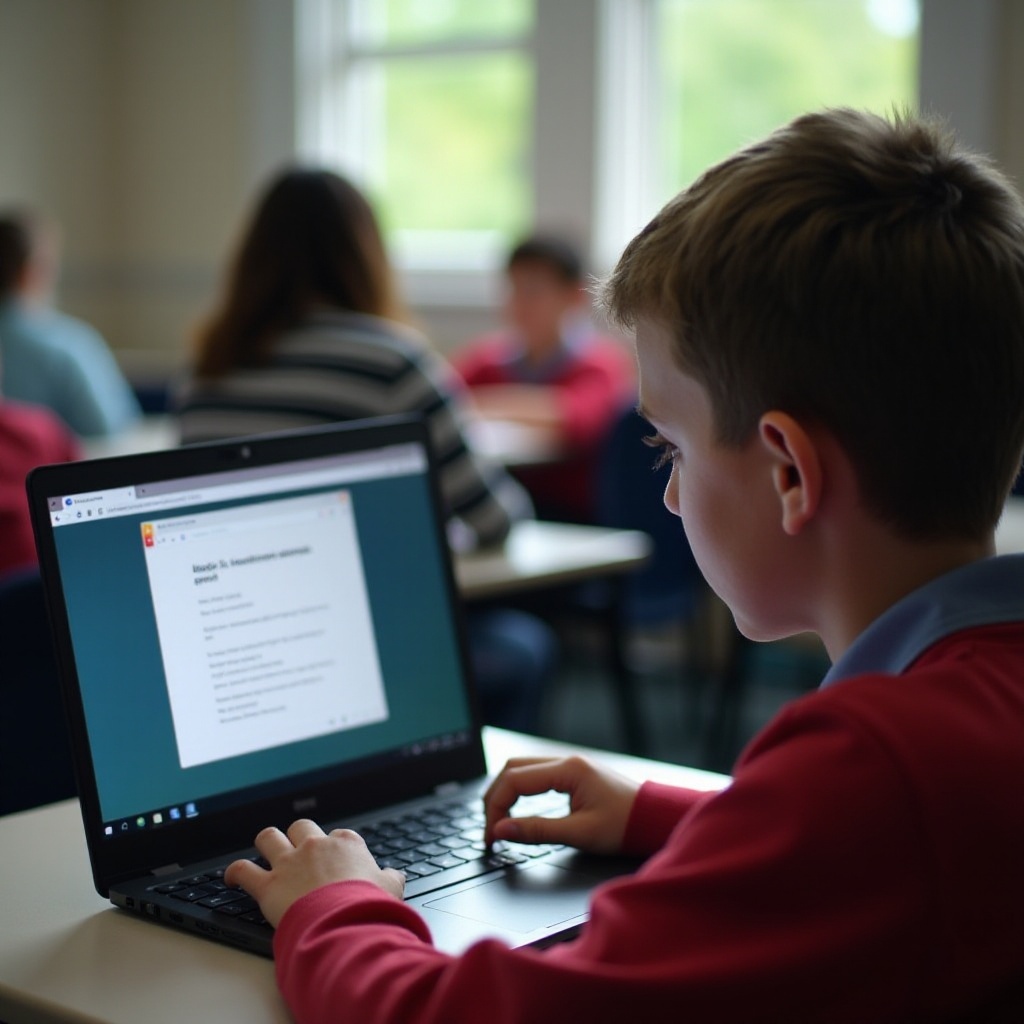Introduction
Have you ever been frustrated when trying to access a website on your school Chromebook, only to find it blocked? School administrators use filters to ensure students remain focused on academics, but these restrictions can sometimes block useful educational resources. If you’re looking to access valuable content for your school projects or just need some flexibility, you’ve come to the right place. This guide will walk you through several methods to unblock websites on your school Chromebook, so you can make the most out of your online experience while respecting school policies.

Understanding School Chromebook Restrictions
School Chromebooks are configured with strict access settings to comply with educational standards. Administrators often install software to prevent students from visiting non-educational websites. These restrictions aim to create a focused learning environment, but they can sometimes hinder your ability to access necessary resources. To regain that access, several methods can be employed, which we will explore in the following sections.

Using a VPN to Unblock Websites
One of the most effective ways to bypass school restrictions is by using a Virtual Private Network (VPN). A VPN redirects your internet traffic through a remote server, masking your IP address and making it appear as if you’re browsing from a different location.
- Choose a Reliable VPN: Research and select a VPN service that is known for its reliability and security.
- Install the VPN: Download the VPN application from the Chrome Web Store or the VPN’s official website.
- Sign In and Connect: Open the VPN application, log in, and connect to a server location of your choice.
- Browse Freely: Once connected, you should be able to access the blocked websites without any issues.
However, be cautious as not all VPNs work flawlessly on school networks, and some schools have measures to detect VPN usage.
Proxy Servers as an Alternative
If a VPN isn’t suitable for your needs, consider using a proxy server. A proxy acts as an intermediary between your device and the internet, helping you to bypass restrictions.
- Find a Proxy Server: Look for free or paid proxy server services. Websites like HideMyAss or KProxy offer reliable options.
- Enter Proxy Settings: Go to your Chromebook’s network settings and manually enter the proxy server’s address and port.
- Test the Connection: Ensure the proxy is working by accessing a previously blocked website.
While proxies can be useful, they may be slower and less secure compared to VPNs.
Browser Extensions for Unblocking Websites
Browser extensions can provide a simpler alternative to VPNs and proxy servers. They are easy to install and often free.
- Install Extension: Visit the Chrome Web Store and search for extensions like Hola, ZenMate, or SetupVPN.
- Add to Chrome: Click the ‘Add to Chrome’ button and follow the prompts to install the extension.
- Activate and Use: Open the extension from the toolbar, turn it on, and visit the blocked website.
Keep in mind that these extensions might be restricted by your school’s network policies, so they might not always work.
Using Google Translate as a Bypass
A lesser-known trick involves using Google Translate to access blocked content. Here’s how you can do it:
- Go to Google Translate: Visit translate.google.com.
- Enter URL: Paste the URL of the blocked website into the translation box.
- Translate and Open: Click on the translated URL link to access the website.
This method works because Google Translate can act as a middleman, but it’s not effective for all websites.
Changing DNS Settings to Unblock Websites
Changing your DNS settings can also help you bypass restrictions. DNS stands for Domain Name System, and changing it can help you access blocked sites.
- Open Settings: Go to the Chromebook’s settings and navigate to the network settings.
- Select Network: Click on the connected network and find the DNS settings.
- Change DNS Server: Use reliable DNS servers such as Google Public DNS (8.8.8.8, 8.8.4.4) or OpenDNS (208.67.222.222, 208.67.220.220).
This method can help you bypass some restrictions, although it may not work every time.
Accessing Websites Through IP Address
In some cases, accessing a website through its IP address instead of its URL can bypass restrictions.
- Find the IP Address: Use online tools like ‘What’s My IP’ to find the IP address of the website.
- Enter IP Address: Enter the IP address into the browser’s address bar and hit Enter.
This method may be limited, as some restrictions also apply to IP addresses.

Requesting Access Through School IT Department
If all else fails, sometimes the simplest method is the most effective. Requesting access from your school IT department can resolve issues quickly.
- Submit a Request: Draft a polite request explaining why you need access to the website.
- Wait for Approval: The IT department will review your request and unblock the site if it meets educational standards.
Being honest and straightforward with your request can often yield positive results.
Conclusion
Accessing blocked websites on a school Chromebook can be a bit tricky, but there are several methods that you can try. From using VPNs and proxy servers to browser extensions and DNS changes, each method offers its own advantages. Always remember to use these techniques responsibly and in accordance with your school’s policies.
Frequently Asked Questions
Is it legal to unblock websites on a school Chromebook?
Unblocking websites on a school Chromebook is generally against school policies. It’s crucial to understand the rules and ensure you’re not violating them. Always use these methods responsibly.
Can using a VPN on a school Chromebook be detected?
Yes, schools can sometimes detect VPN traffic. Advanced security systems may recognize and block VPN connections, so it’s important to choose a reputable VPN service.
What should I do if none of these methods work?
If none of these methods are effective, your best option is to discuss your needs with the school IT department. They can provide access if your reason is legitimate and aligned with educational purposes.